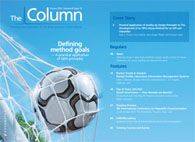Baby food
A team of scientists in Spain has produced a new method that detects traces of veterinary drugs in baby food.
A team of scientists in Spain has produced a new method that detects traces of veterinary drugs in baby food.1
Antibiotics that have been given to livestock can still be present later in food and have been detected in baby food. The quantities are not high enough to cause concern but should be monitored and controlled.
The developed method involves an extraction procedure based on buffered QuEChERS methodology, followed by ultra-high performance liquid chromatography coupled to tandem mass spectrometry (UHPLC-MS–MS). Quantification was carried out using matrix-matched standard calibration. The decision limit (CCα) and the decision capability (CCβ) were evaluated and ranged from 0.5 to 16.2 µg/kg and from 1.2 to 22.4 µg/kg, respectively. The method was tested in both meat-based baby food and powdered milk-based infant formulae at three different concentrations. All together, five veterinary drugs were found in the powdered milk and ten in the meat-based food.
The method was concluded to be a simple and rapid way of detecting drugs in baby food.
1. A.G. Frenich et al., Food Chemistry132(4), 2171–2180 (2012).
This story originally appeared in The Column. Click here to view that issue.


.png&w=3840&q=75)

.png&w=3840&q=75)



.png&w=3840&q=75)



.png&w=3840&q=75)










